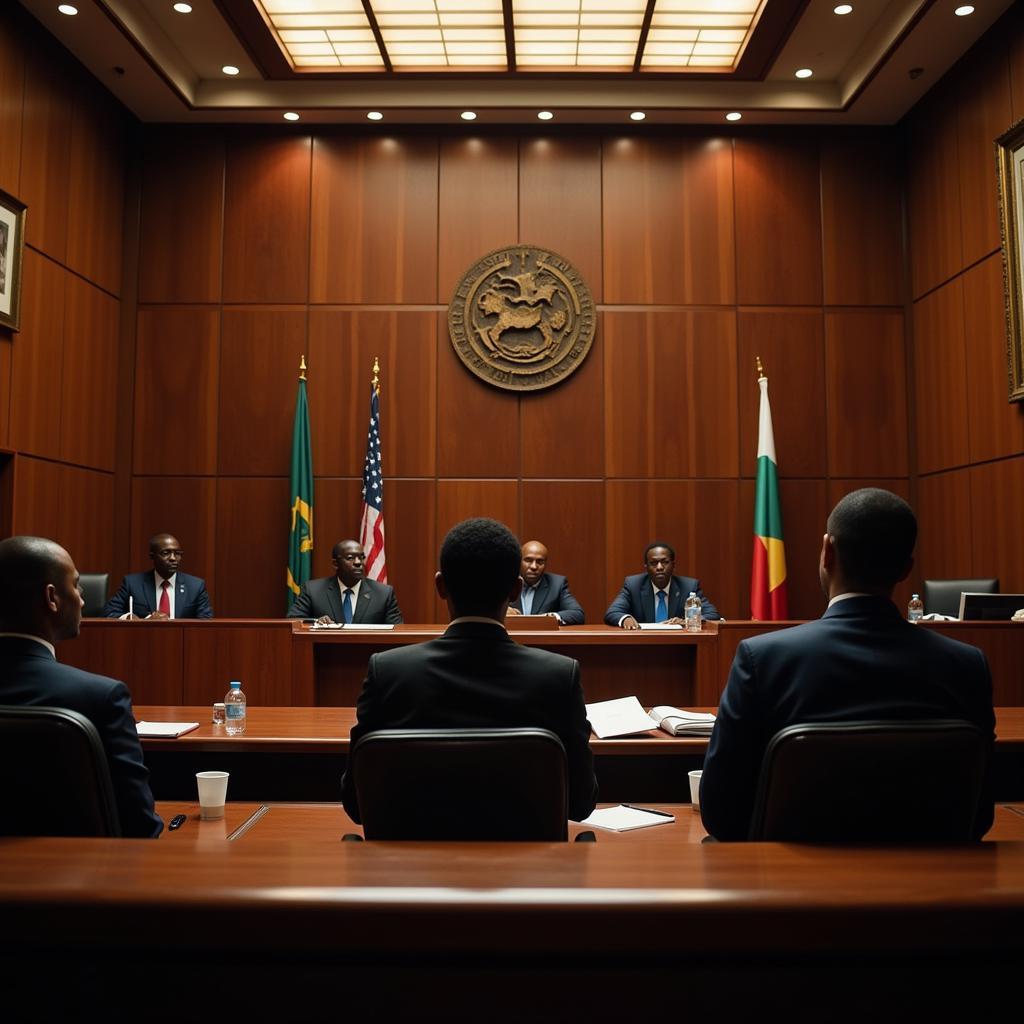Uncovering the History of Germany’s African Colonies
German colonial rule in Africa, a relatively short but impactful period between the 1880s and World War I, left a complex legacy on the continent. This period saw Germany establish control over territories now encompassing present-day Tanzania, Namibia, Togo, Cameroon, Rwanda, Burundi, and parts of Gabon, shaping their political, economic, and social landscapes. Understanding the intricacies of these African Colonies Of Germany provides valuable insights into the broader context of European colonialism in Africa. After Germany’s defeat in WWI, these colonies were redistributed to other European powers.
The pursuit of raw materials and new markets fueled Germany’s colonial ambitions, mirroring the motives of other European powers. The Berlin Conference of 1884-1885 formalized the “Scramble for Africa,” dividing the continent among European nations, and Germany secured its share. This scramble was driven by economic interests, political rivalries, and a sense of nationalistic fervor. The impact of this period continues to resonate today. Learn more about African countries and their colonial rulers.
Exploring German East Africa: A Colonial Microcosm
German East Africa, encompassing present-day Tanzania, Rwanda, and Burundi, became the largest and most populous of Germany’s African colonies. This region became a focal point for German colonial administration, economic exploitation, and infrastructural development.
- Economic Exploitation: German colonial policies centered on extracting resources like rubber, sisal, and cotton. Large plantations were established, often displacing indigenous populations and disrupting traditional agricultural practices.
- Infrastructure Development: Germany invested in infrastructure projects, including railways and ports, primarily to facilitate the transportation of resources back to Europe. While these projects had some long-term benefits, they primarily served colonial interests.
- Resistance and Rebellion: Indigenous resistance to German rule was widespread, culminating in the Maji Maji Rebellion of 1905-1907. This rebellion, though ultimately suppressed, highlighted the deep resentment against colonial policies.
The Brutal Reality of German South West Africa
German South West Africa, now Namibia, experienced a particularly brutal period under German colonial rule. The Herero and Namaqua genocide, between 1904 and 1908, stands as a stark reminder of the atrocities committed during this era. This genocide, driven by land disputes and resistance to German authority, resulted in the systematic extermination of a significant portion of the Herero and Namaqua populations.
- Land Dispossession: German settlers seized vast tracts of land, displacing indigenous communities and disrupting their traditional livelihoods.
- Forced Labor: The Herero and Namaqua people were subjected to forced labor on farms and mines, often enduring inhumane conditions.
- The Genocide: The German colonial authorities implemented a policy of extermination against the Herero and Namaqua people, marking a dark chapter in the history of colonialism. This genocide foreshadowed the horrors of the 20th century.
The Lesser-Known Colonies: Togo and Cameroon
Togo and Cameroon, while smaller than German East and South West Africa, also experienced the impact of German colonial rule. These colonies were subjected to similar economic exploitation and political control. The introduction of cash crops, like cocoa and coffee, transformed the agricultural landscape, often at the expense of food security.
- Economic Transformation: German colonial policies shifted agricultural production towards cash crops for export, impacting local food production and traditional farming practices.
- Administrative Control: German administrators established bureaucratic structures and implemented policies aimed at controlling the local populations.
- Cultural Impact: German language and culture left a lasting influence on these colonies, even after the end of German rule. For example, German is still spoken in parts of these countries. You can find more about this in the article: African countries where German is spoken.
What were the motivations behind German colonization in Africa?
The primary motivations were economic, driven by the desire for raw materials and new markets. Political considerations, including the pursuit of national prestige and strategic advantage, also played a role. Learn about the different African countries by colony.
Conclusion
The history of Germany’s African colonies represents a complex and often brutal chapter in the continent’s past. From the economic exploitation of German East Africa to the genocide in German South West Africa, German colonial rule left an indelible mark on the African continent. Understanding the african colonies of Germany is crucial for comprehending the lasting legacies of colonialism in Africa. You may also find interesting this story about an African doctor kept in a Nazi compound.
FAQ
- What were the main African colonies of Germany? German East Africa (Tanzania, Rwanda, Burundi), German South West Africa (Namibia), Togo, and Cameroon.
- When did German colonization in Africa begin and end? It began in the 1880s and ended after World War I in 1918.
- What was the Maji Maji Rebellion? A major uprising against German rule in German East Africa between 1905 and 1907.
- What was the Herero and Namaqua genocide? The systematic extermination of the Herero and Namaqua people by German colonial forces in German South West Africa between 1904 and 1908.
- What were the main economic activities in German African colonies? Extraction of resources like rubber, sisal, cotton, cocoa, and coffee.
When needing assistance, please contact us:
Phone: +255768904061
Email: kaka.mag@gmail.com
Address: Mbarali DC Mawindi, Kangaga, Tanzania.
Our customer service team is available 24/7.


